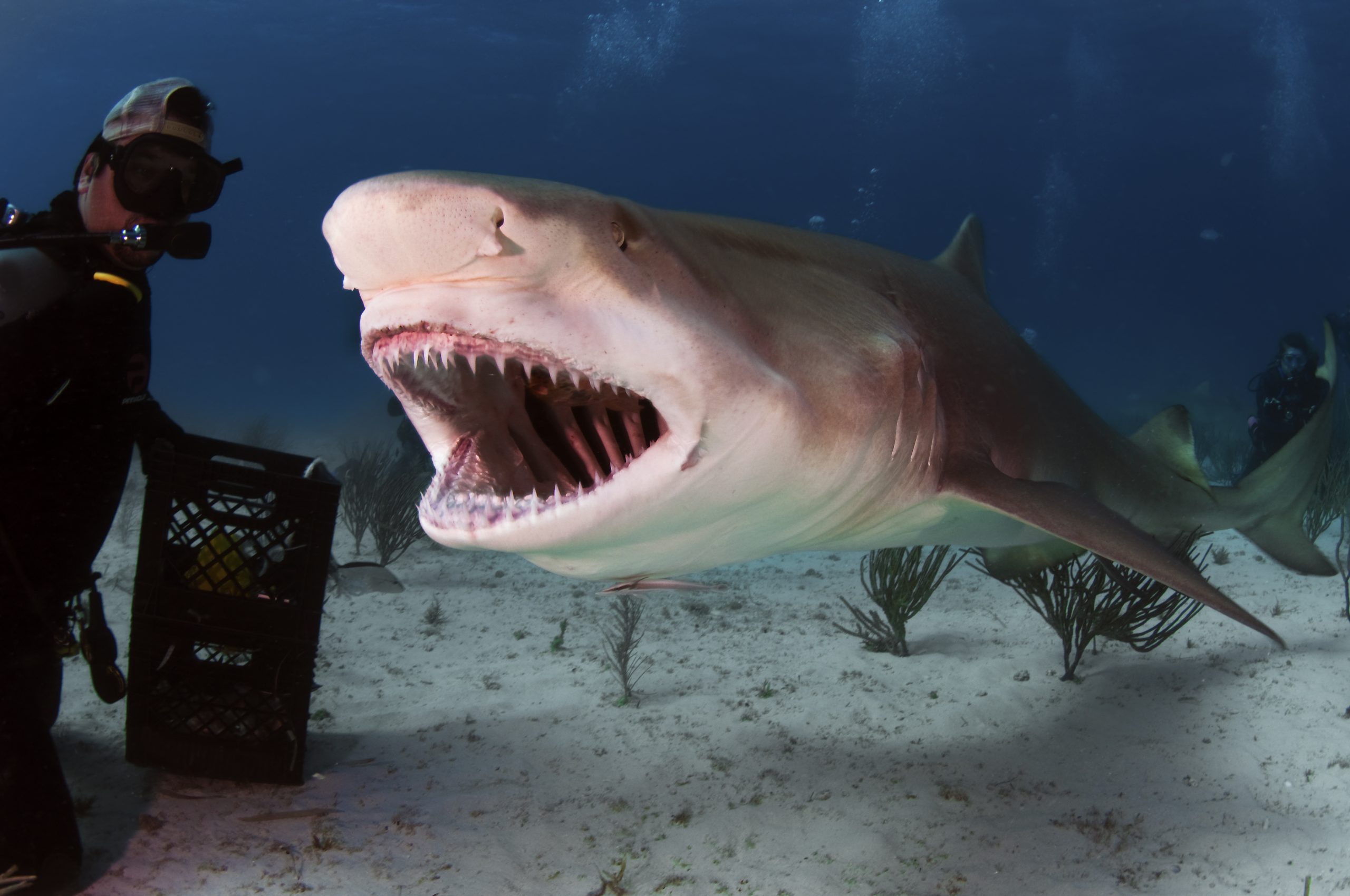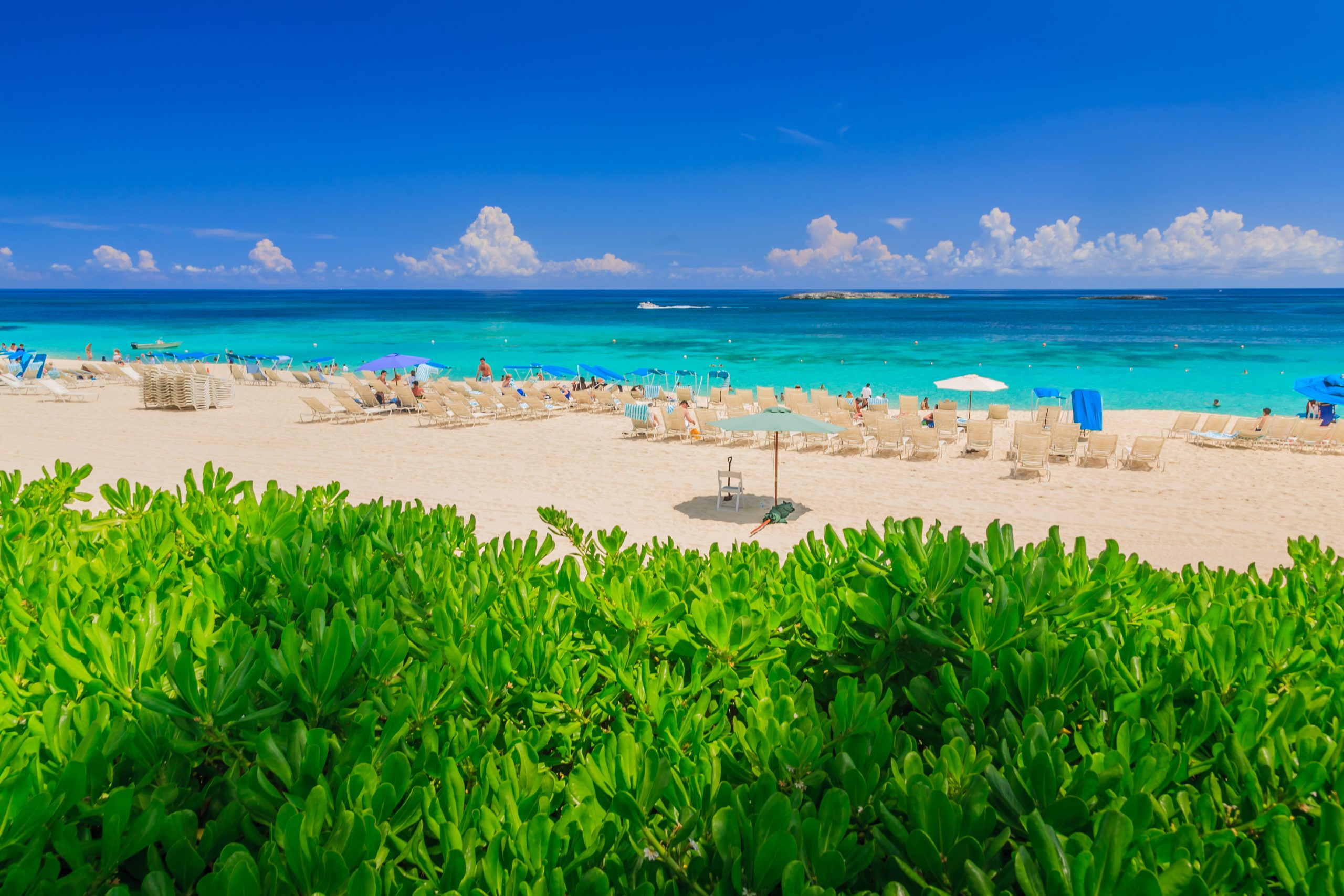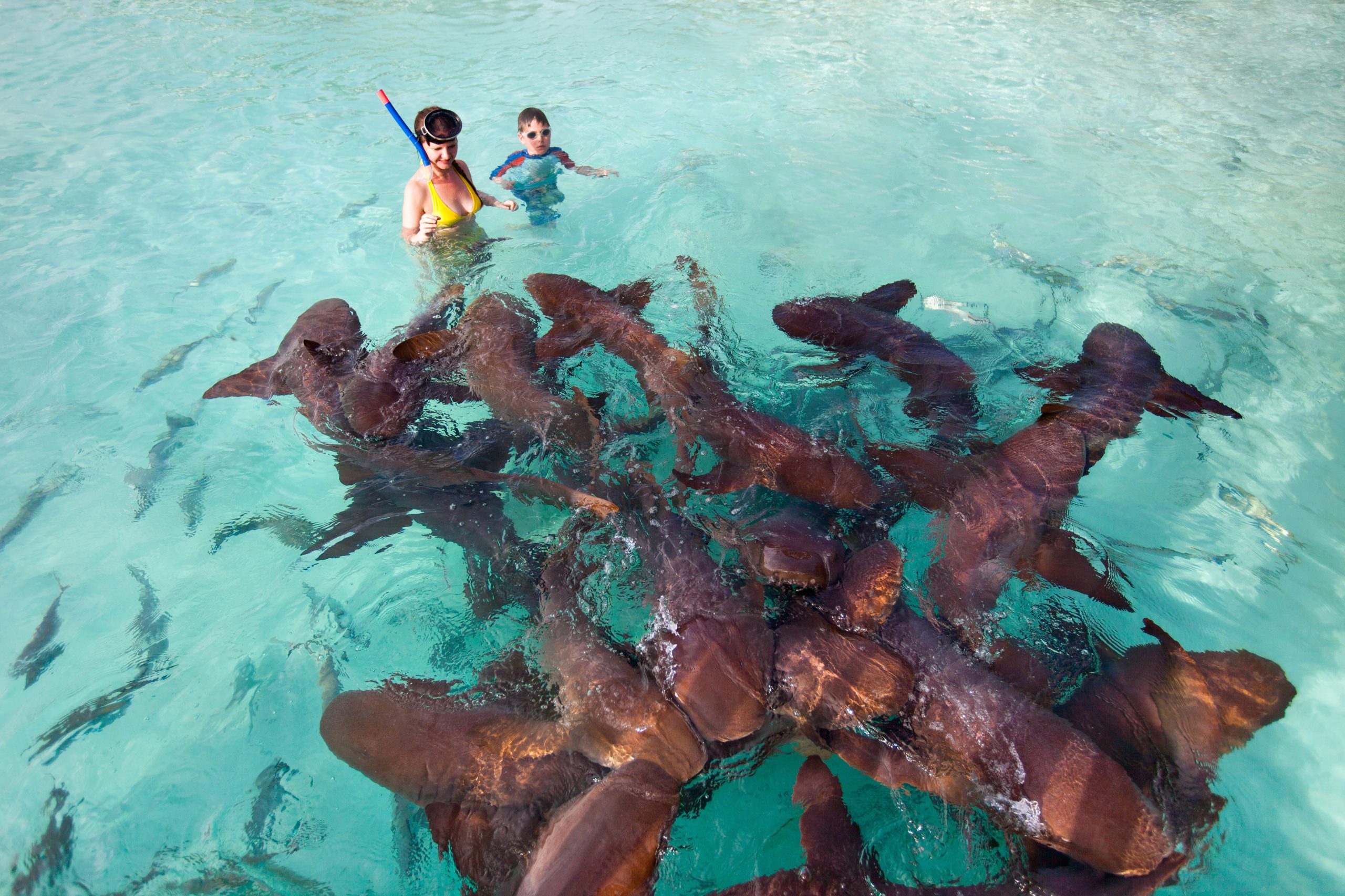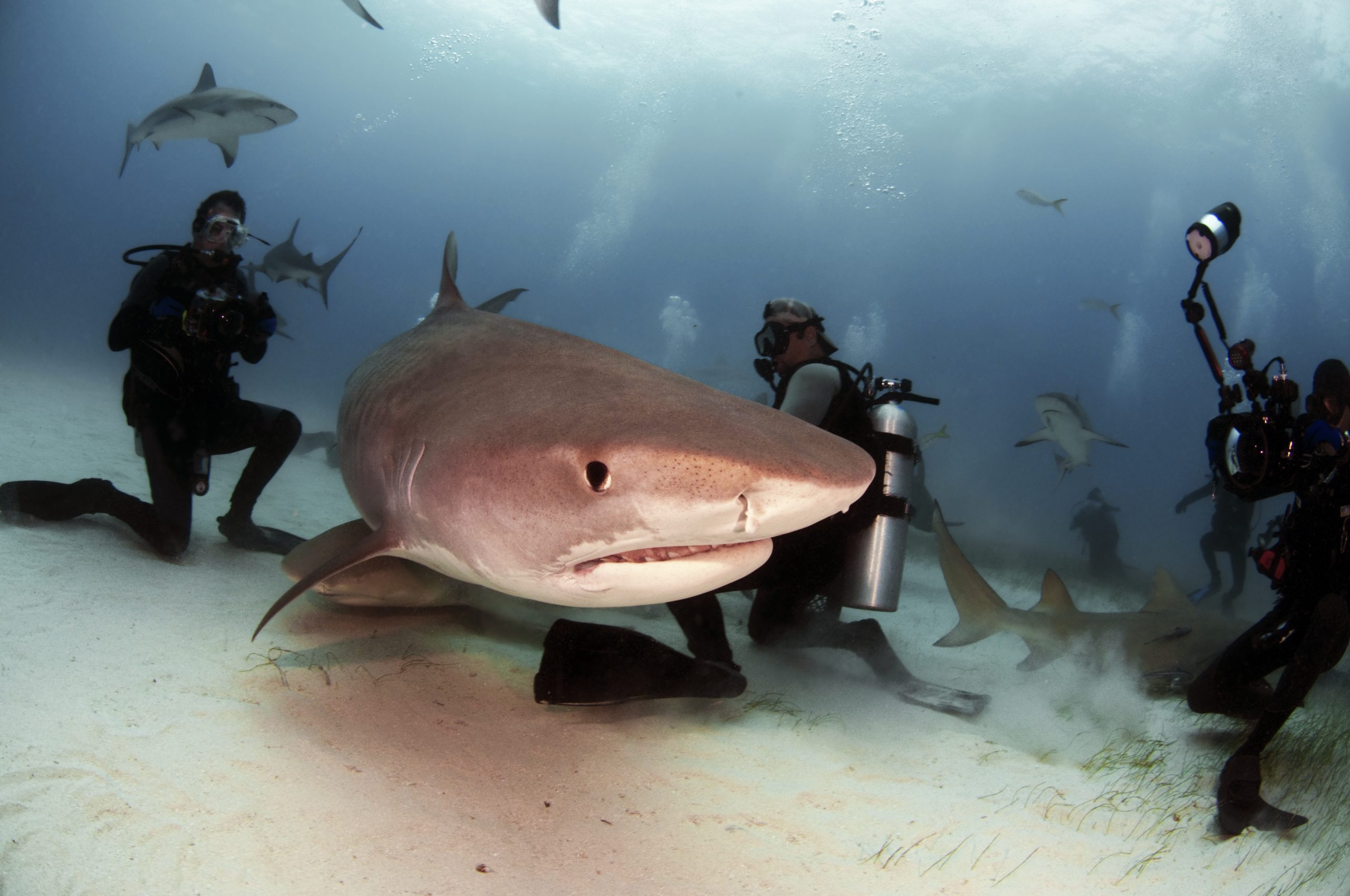The Bahamas is a tropical paradise renowned for its stunning blue seas and vibrant marine life. With 700 islands and thousands of cays, this Caribbean destination offers a plethora of diving opportunities for enthusiasts from around the world. One of the most exhilarating experiences one can have in The Bahamas is shark diving. The chance to get up close and personal with these magnificent creatures of the deep is a dream come true for many divers. In this article, we will explore everything you need to know about shark diving in The Bahamas, including what to expect, where to go, and how to make the most of this once-in-a-lifetime adventure.
Exploring Shark Species in the Bahamas

The Bahamas is known around the world as one of the most excellent places to dive with sharks. Its shallow waters are full of a wide variety of different species, each with its own unique characteristics and mannerisms. From the majestic Great Hammerhead Shark to the fearsome Tiger Shark, the Bull Shark and the graceful Lemon Shark, the country has an abundance of sharks to experience. As apex predators, they are essential to the balance of the ocean’s environment. By taking part in a shark dive, you are not only able to have an up close and personal experience with these creatures but also contribute to their conservation.
When Shark Diving in The Bahamas, Here is What to Anticipate
Prior to a shark diving outing in The Bahamas, it is important to understand what to anticipate. Dive masters and guides usually provide instructions and safety rules before the trip. During the briefing, you will be informed about the various shark species you might come across and how to act when in close proximity to these powerful creatures. Although some dive expeditions involve cages for safety, The Bahamas offers the exclusive chance to swim with sharks in the open ocean. Generally, the shark species present in this region are calmer, allowing for a secure and exciting experience. You can rest assured that professional diving companies will prioritize your safety and be there to help you through the encounter.
Discovering the Finest Shark Diving Spots in The Bahamas
The Bahamas offers a range of islands that are perfect for shark diving. Here are a few notable destinations:
Cat Island
Cat Island, located just a short plane ride away from Nassau, is a hidden gem for divers. Despite its small size, Cat Island boasts remarkable diving sites, making it one of the best destinations for shark diving in The Bahamas. Oceanic Whitetip Sharks can be found here, especially during the spring when they come closer to shore. Silky Sharks and Dusky Sharks are also common sightings around Cat Island. Depending on the season and timing of your dive, you may encounter Tiger Sharks, Great Hammerheads, Blue Sharks, Blue Marlins, stingrays, and even Thresher Sharks. Cat Island offers an array of marine wonders waiting to be explored.
Bimini
Visitors to Bimini can experience the incredible opportunity to dive with Great Hammerhead Sharks at Hammerhead Grounds. November to April is the optimum time to view these majestic creatures, and divers typically anchor up and set up bait to attract them. Once the Hammerheads have become comfortable, divers can then enter the water in around 20 feet of depth, allowing for longer stays. In addition, guests can also inquire about swimming with stingrays at Honeymoon Harbor, providing them the chance to interact with these gentle animals.
Nassau / New Providence

Nassau, the capital city of The Bahamas, is located on the island of New Providence. This bustling hub of touristic activity is a popular choice for divers due to its convenience and proximity to the United States. Nassau offers incredible diving experiences without the need for lengthy travel. Dive enthusiasts can look forward to sightings of Caribbean Reef Sharks, Silky Sharks, and even the occasional Tiger Shark. Other marine life, such as the Nassau Grouper, stingrays, and sea turtles, can also be observed during dives in this area. Nassau provides various dive adventures, including shark feeding dives organized by reputable dive teams.
Grand Bahama
Grand Bahama, the fourth largest island in The Bahamas, is situated approximately 100 miles east of Palm Beach, Florida. This island is beloved by divers for its abundant marine life and captivating dive sites. Tiger Beach, located about 20 miles off the west end of Grand Bahama, is a renowned spot for shark diving. This shallow sand flat offers crystal-clear waters and thriving coral reefs teeming with moray eels, groupers, snappers, and sea turtles. Tiger Beach is particularly famous for its Tiger Sharks, with sightings of up to 17 pelagic tiger sharks at a time. Lemon Sharks, Nurse Sharks, and Caribbean Reef Sharks also frequent this area. Grand Bahama promises an unforgettable shark diving experience.
Compass Cay

For those eager to swim with Nurse Sharks, Compass Cay is a must-see destination. The waters of Compass Cay Marina are home to these popular Bahamas creatures, and they can be easily seen when boats approach the marina. Compass Cay is part of the Exuma Cays, consisting of around 360 cays, islands, and islets. Aside from swimming with nurse sharks, visitors can partake in other activities, such as snorkeling in James Bond’s cave and swimming with pigs at Pig Beach. Many travelers combine a trip to the nurse sharks with a stop at Pig Beach for the unique opportunity of swimming with pigs.
The Significance of Tourism That is Done Responsibly
The Bahamas has taken significant steps in shark conservation, distinguishing itself from other regions. In 1993, the country banned longline fishing, a major threat to shark populations. In 2011, The Bahamas established one of the world’s first national shark sanctuaries. This proactive attitude has not only benefited the sharks but also had a positive economic impact. The shark-diving industry in 2008 contributed $78 million to the local economy, and this figure has continued to grow. Sharks and rays now generate an impressive $113.8 million annually, constituting 1.3 percent of the country’s GDP.
The success of responsible shark tourism in The Bahamas is attributed to the well-organized approach to shark feeding dives. These dives are meticulously managed by knowledgeable operators and centers that actively campaign for shark conservation. Current data reveals that feeding techniques have no effect on shark behavior, leaving migration patterns and other characteristics unaffected.
Is Certification Necessary for Diving?
While most shark dive experiences in The Bahamas require divers to be certified, some dive companies offer the option to snorkel with a cage dive. If you have never dived before, consider taking the opportunity to become a certified diver while on vacation in The Bahamas. Consult your chosen dive company to confirm their certification requirements and facilitate this amazing experience.
The Expense associated with Shark Diving in The Bahamas
The cost of shark diving in The Bahamas can be anywhere from $130 to $440 USD per person, depending on a variety of factors such as the dive company, location, length of the excursion, number of tanks, and extra gear rental. It is important to bear in mind that the quoted price does not incorporate transportation, equipment rental, or specialty classes. It is recommended to ask for a full cost analysis when booking your shark diving experience.
Tips for Shark Divers Visiting The Bahamas
When embarking on a shark diving adventure in The Bahamas, it is essential to keep certain tips in mind to ensure a safe and enjoyable experience:
- Be cautious and attentive: Always remain vigilant and avoid turning your back on approaching sharks.
- Stay still: When encountering a shark, it is important to remain calm and motionless.
- No touching: Resist the temptation to touch the sharks, as this can disrupt their natural behavior.
- Avoid specific times: Shark diving at dawn, dusk, or night is generally discouraged, as some species tend to move closer to shore during these periods to feed on fish.
- Dress appropriately: Avoid wearing shiny jewelry, as it may resemble fish scales to sharks. Opt for black wetsuits, which are less likely to be mistaken for prey.
- Guiding tool: Consider carrying a PVC pipe to gently guide overly curious sharks away from you. However, note that your guides will be present throughout the dive to ensure your safety and comfort.
- Physical Fitness and Swimming Skills: Ensure you are in good physical condition and have adequate swimming skills for open-water diving.
- Choose Reputable Dive Operators: Select dive operators with a proven track record of responsible and safe practices. Research online reviews and ask for recommendations from fellow divers.
- Follow Local Guidelines and Regulations: Familiarize yourself with the rules and regulations set forth by local authorities and dive operators. Respect these guidelines for your safety and the well-being of the sharks.
- Stay Calm and Relaxed: Maintain a calm and relaxed demeanor underwater. Avoid sudden movements or aggressive behavior that might startle the sharks. Most sharks are more interested in their natural prey than humans.
- Maintain a Safe Distance: Always keep a safe distance from the sharks. Respect their natural behaviors and give them the space they need to move freely.
- Use Recommended Shark Diving Gear: Wear appropriate diving gear, such as a wetsuit, mask, and snorkel, as recommended by your dive operator.
- Listen to Dive Briefings: Pay attention to dive briefings provided by your guide. They will provide important information about the dive site, shark behavior, and safety procedures.
A Few Things You Should Have with You When You Go Shark Diving
To fully enjoy your shark diving experience in The Bahamas, it is important to pack the necessary gear and essentials. Depending on your preference, you can choose to bring your own diving equipment or rent gear upon arrival. Renting dive gear can be convenient and allows you to travel light. Additionally, remember to pack at least one wetsuit, preferably black, as it is the recommended color for shark diving. Check with your dive company beforehand to confirm what is included in your dive package and what additional items you need to bring. Don’t forget to pack snacks, drinks, and any personal items you may need during the trip.
The Best Time to Shark Dive in The Bahamas
The ideal time to visit The Bahamas is usually from the end of the year to mid-April when the weather is most pleasant. If you are searching for an opportunity to shark dive, take into consideration the species you want to encounter. White and Blacktip Reef Sharks, Oceanic Whitetip Sharks, and Tiger Sharks can be seen any time, while Bull Sharks are visible between February and April. Hammerhead Sharks can be seen most often from December to February and Whale Sharks can be spotted in January and February. To arrange a successful shark diving experience, it is a good idea to research the particular species and when they are usually seen.
Conclusion
Shark diving in The Bahamas is an adventure like no other. With its vast array of dive sites and diverse marine life, The Bahamas offers unparalleled opportunities to witness these magnificent creatures up close. From swimming safely in open waters with docile shark species to encountering Tiger Sharks, Hammerheads, and more, the thrill of shark diving in The Bahamas is truly unforgettable. Remember to follow the tips provided, pack the necessary gear, and plan your trip according to the best time to encounter your desired shark species. Get ready for an awe-inspiring experience that will leave you with memories to last a lifetime.
—
Be sure to tag us in your photos and videos @resortcaribbean, and follow our socials: Instagram, Facebook, YouTube.






![What You Need to Know before Visiting Azul Beach Resort Negril Jamaica Gourmet All-Inclusive [Resort Review] Azul Beach Resort Pool](https://resortcaribbean.co/wp-content/uploads/2021/09/20210828_091210-2-100x70.jpg)
![Visiting Ocean Coral Spring – One of Jamaica’s Most Famous Resorts [Resort Review] Visiting Ocean Coral Spring - One of Jamaica's Most Famous Resorts](https://resortcaribbean.co/wp-content/uploads/2021/11/20211106_155809-100x70.jpg)
![What is it like Visiting Iberostar Rose Hall Beach, Iberostar Grand Rose Hall, Iberostar Selection Rose Hall Suites? [Resort Review] What is it like visiting Iberostar Rose Hall Beach, Iberostar Grand Rose Hall, Iberostar Selection Rose Hall Suites?](https://resortcaribbean.co/wp-content/uploads/2023/03/20151129_122732-100x70.jpg)